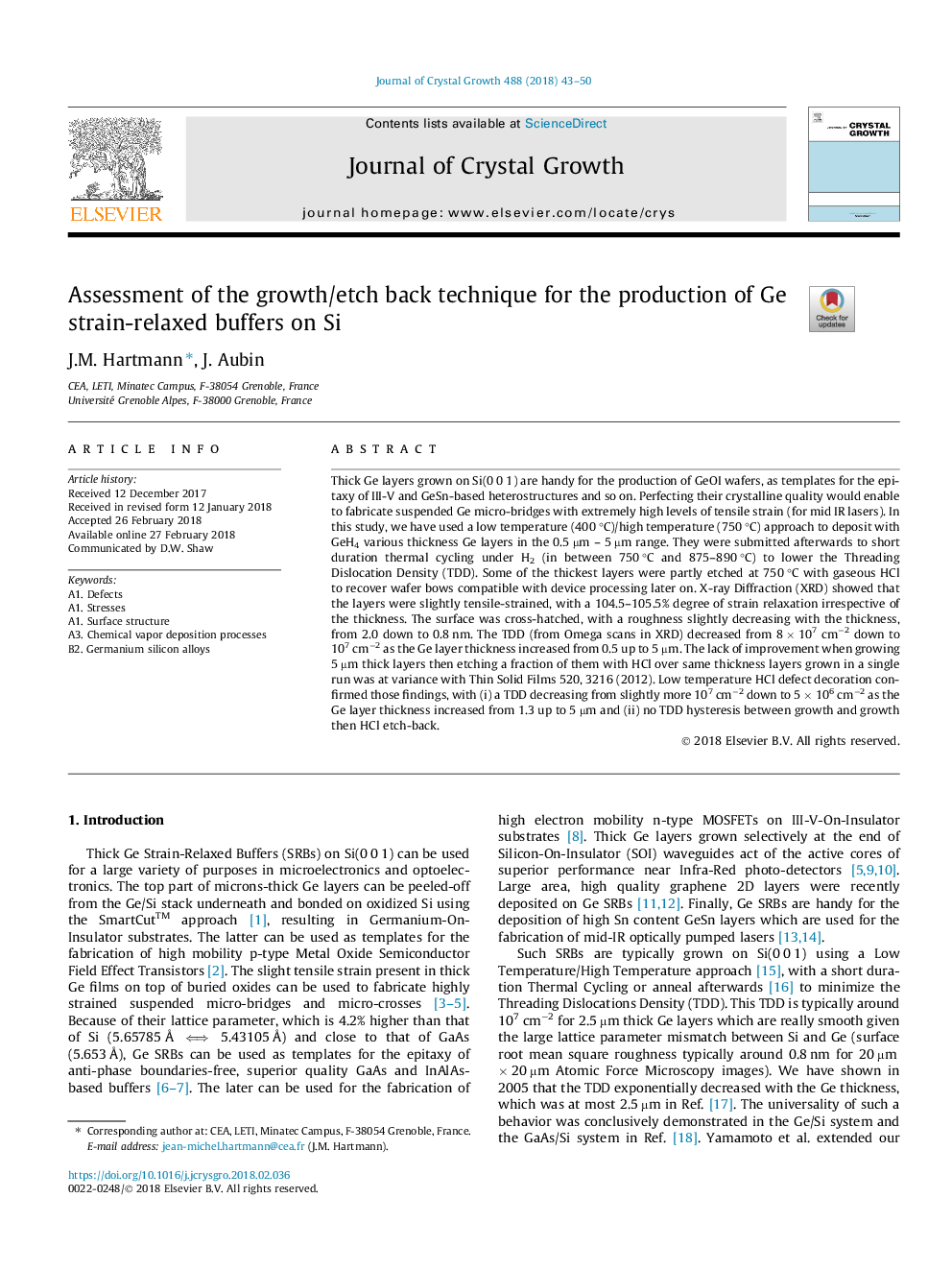| Article ID | Journal | Published Year | Pages | File Type |
|---|---|---|---|---|
| 8148640 | Journal of Crystal Growth | 2018 | 8 Pages |
Abstract
Thick Ge layers grown on Si(0â¯0â¯1) are handy for the production of GeOI wafers, as templates for the epitaxy of III-V and GeSn-based heterostructures and so on. Perfecting their crystalline quality would enable to fabricate suspended Ge micro-bridges with extremely high levels of tensile strain (for mid IR lasers). In this study, we have used a low temperature (400â¯Â°C)/high temperature (750â¯Â°C) approach to deposit with GeH4 various thickness Ge layers in the 0.5â¯Âµm - 5â¯Âµm range. They were submitted afterwards to short duration thermal cycling under H2 (in between 750â¯Â°C and 875-890â¯Â°C) to lower the Threading Dislocation Density (TDD). Some of the thickest layers were partly etched at 750â¯Â°C with gaseous HCl to recover wafer bows compatible with device processing later on. X-ray Diffraction (XRD) showed that the layers were slightly tensile-strained, with a 104.5-105.5% degree of strain relaxation irrespective of the thickness. The surface was cross-hatched, with a roughness slightly decreasing with the thickness, from 2.0 down to 0.8â¯nm. The TDD (from Omega scans in XRD) decreased from 8â¯Ãâ¯107 cmâ2 down to 107 cmâ2 as the Ge layer thickness increased from 0.5 up to 5â¯Âµm. The lack of improvement when growing 5â¯Âµm thick layers then etching a fraction of them with HCl over same thickness layers grown in a single run was at variance with Thin Solid Films 520, 3216 (2012). Low temperature HCl defect decoration confirmed those findings, with (i) a TDD decreasing from slightly more 107 cmâ2 down to 5â¯Ãâ¯106 cmâ2 as the Ge layer thickness increased from 1.3 up to 5â¯Âµm and (ii) no TDD hysteresis between growth and growth then HCl etch-back.
Related Topics
Physical Sciences and Engineering
Physics and Astronomy
Condensed Matter Physics
Authors
J.M. Hartmann, J. Aubin,
